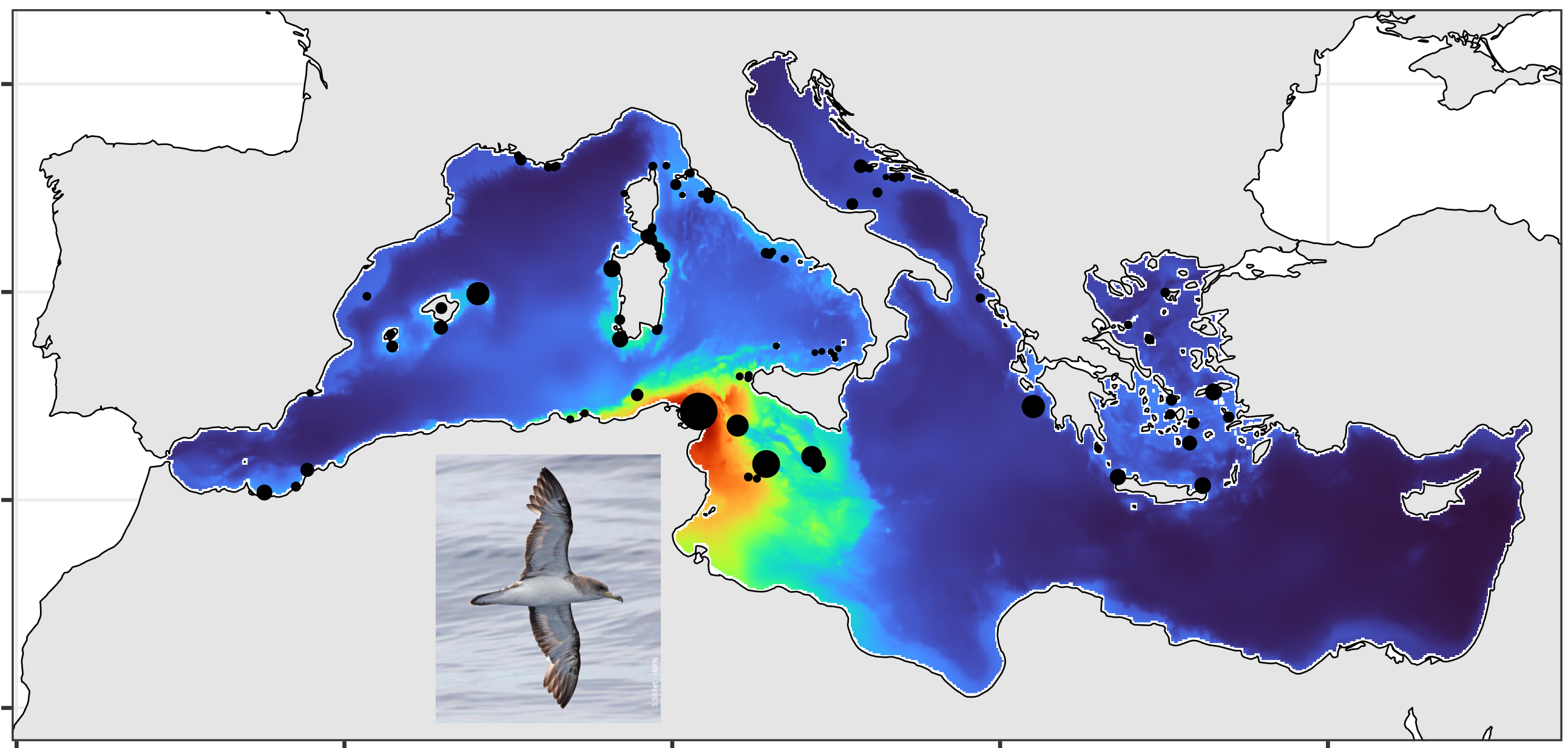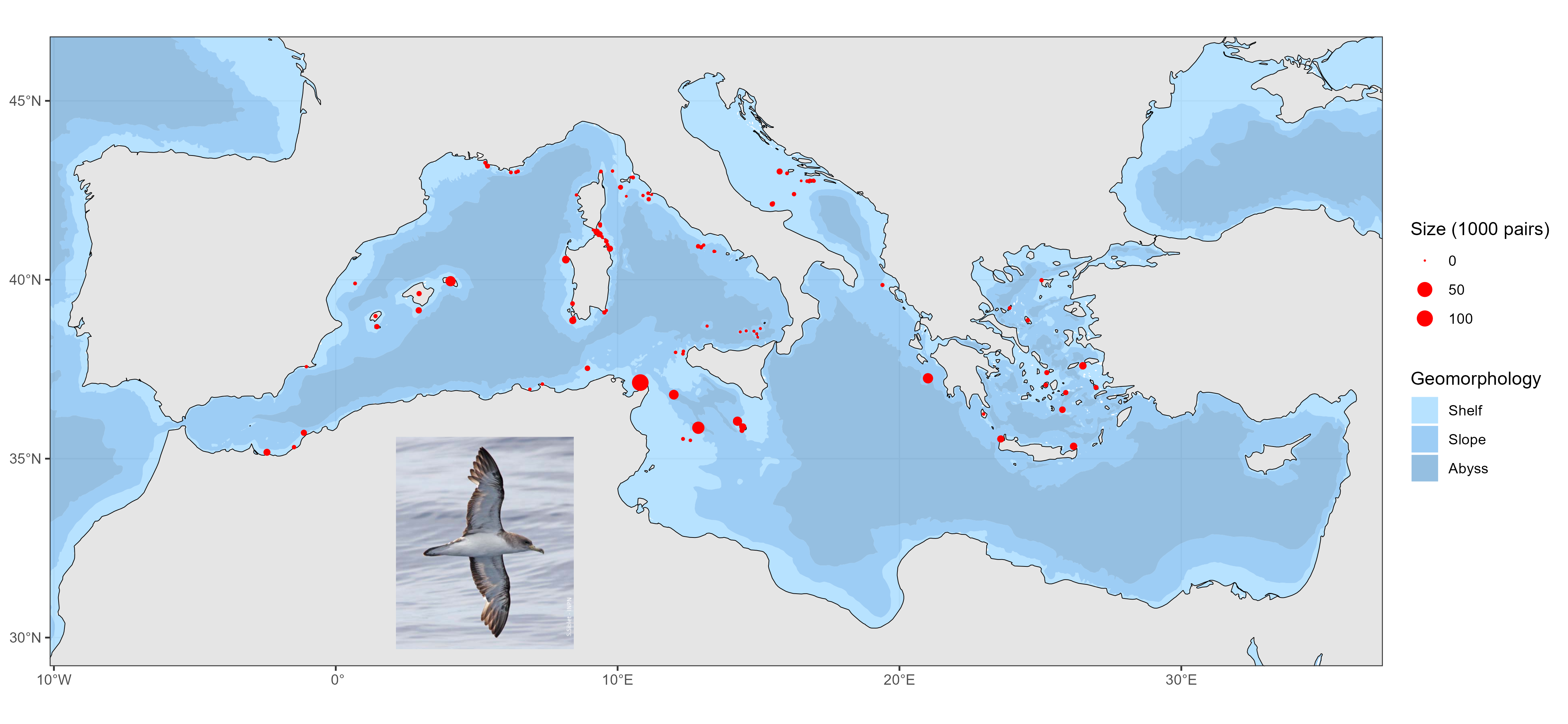Marine turtles, birds, mammals
Type of resources
Available actions
Topics
Keywords
Provided by
Formats
Representation types
-

Distribution of Scopoli's shearwater (Calonectris diomedea) in the Mediterranean Sea during the summer season Distance sampling surveys are extensively used to estimate the abundance of wide-ranging species but are prone to detection biases. This may be particularly acute for strip-transect protocols, which assume perfect detection. We examined this assumption by quantifying the detection probability of a declining seabird (Scopoli’s shearwater, Calonectris diomedea), with particular attention to time-of-day and observation conditions at sea. We found detection probability was negatively affected by sun glare but positively by cloud cover and considerably dropped during mid-day hours due to circadian changes in behaviour (reduced detectability while resting). This result urges for systematically assessing and correcting detection bias when using strip-transect data to derive abundance information. Here, we did so by building a detection-corrected presence-absence ensemble model and combining it with a compilation of colony sizes and locations. A Monte-Carlo simulation ensured uncertainty propagation within and across data sources. The corrected abundance map showed shearwaters were largely prevalent in the central Mediterranean, Tunisia hosting most of the population both at sea and at colonies (45% of the global population; 79% of breeding pairs). This first accurate map is an essential conservation tool, emphasizing the importance of transnational actions for such species, that know no political boundaries.
-

Geolocations of Scopoli's shearwater (Calonectris diomedea) breeding colonies in the Mediterranean Sea. Distance sampling surveys are extensively used to estimate the abundance of wide-ranging species but are prone to detection biases. This may be particularly acute for strip-transect protocols, which assume perfect detection. We examined this assumption by quantifying the detection probability of a declining seabird (Scopoli’s shearwater, Calonectris diomedea), with particular attention to time-of-day and observation conditions at sea. We found detection probability was negatively affected by sun glare but positively by cloud cover and considerably dropped during mid-day hours due to circadian changes in behaviour (reduced detectability while resting). This result urges for systematically assessing and correcting detection bias when using strip-transect data to derive abundance information. Here, we did so by building a detection-corrected presence-absence ensemble model and combining it with a compilation of colony sizes and locations. A Monte-Carlo simulation ensured uncertainty propagation within and across data sources. The corrected abundance map showed shearwaters were largely prevalent in the central Mediterranean, Tunisia hosting most of the population both at sea and at colonies (45% of the global population; 79% of breeding pairs). This first accurate map is an essential conservation tool, emphasizing the importance of transnational actions for such species, that know no political boundaries.
 Catalogue PIGMA
Catalogue PIGMA